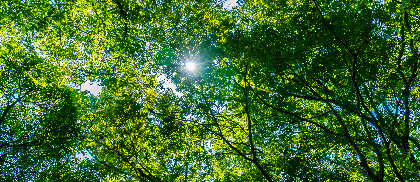Will 75% of trees disappear from Polish forests? PAS expert explains
Recently there has been a lot of media coverage about forest forecasts. The media are reporting, citing the PAS scientists, that 75% of trees may disappear in the next few decades. "We are not threatened by deforestation, but rather the displacement of one species by another, and in consequence a revolutionary change in ecosystems" – emphasized Assoc. Prof. Andrzej M. Jagodziński, director of the PAS Institute of Dendrology.

Where does this apparently false information come from? Let's try to explain the topic in an accessible way. Today, Scots pine, Norway spruce, European larch and silver birch occupy 75% of the forest area in Poland. These four species are the most sensitive to global temperature rise and its indirect consequences.
"Accelerating climate change will impact already mentioned trees, as our region will no longer meet the optimum growth requirements for these trees, and consequently they will disappear from Polish forests. Hundreds of plants, animals and fungal species will die out after them. This is a revolutionary change for ecosystems and a frightening scenario, " explains Andrzej M. Jagodziński.
Thus, forest stands composed of species sensitive to climate change will gradually die off. Foresters have noticed this problem before. But, does that mean that 75% of the trees will disappear from the forests? "No, this is oversimplification. We are not threatened by deforestation, but by a drastic change in the vegetation. Both nature and foresters, will be introducing species better suited to changing environmental conditions into forests," the expert predicts.
Foresters are already rebuilding forests in Poland. In place of pine or spruce stands growing on fertile habitats, they introduce, for example, oaks, beeches, lindens and maples – tree species for which these habitats are optimal.
Source: Institute of Dendrology, Polish Academy of Sciences
